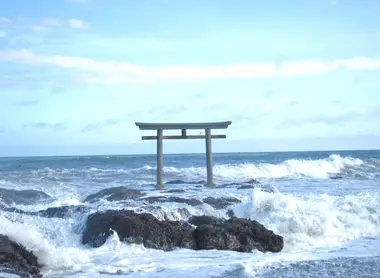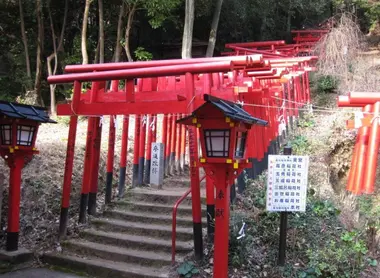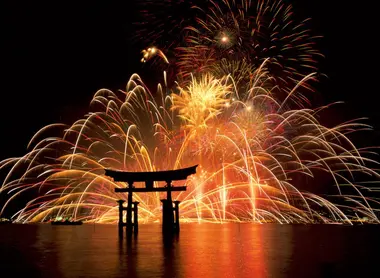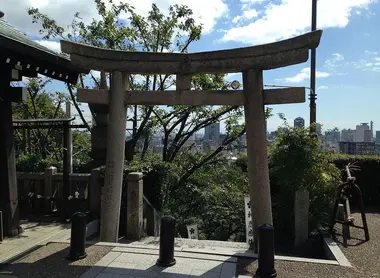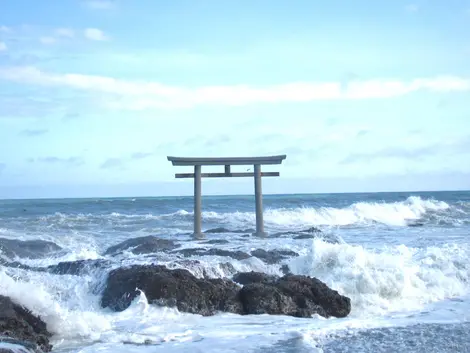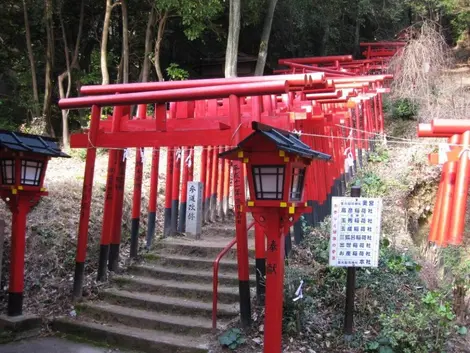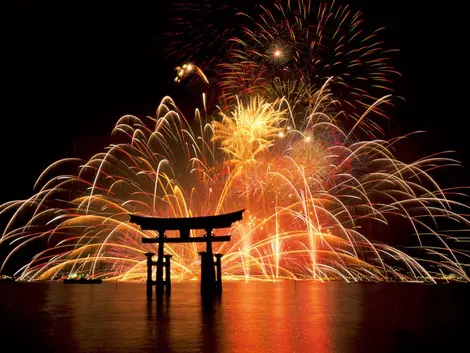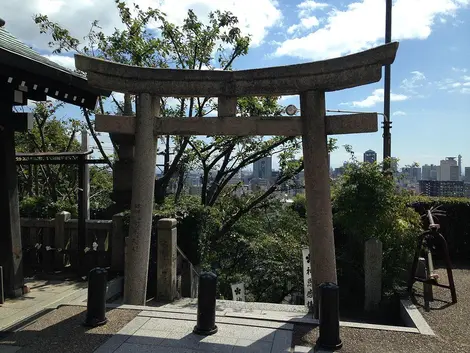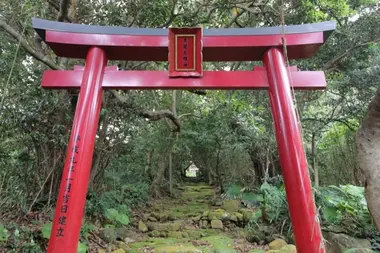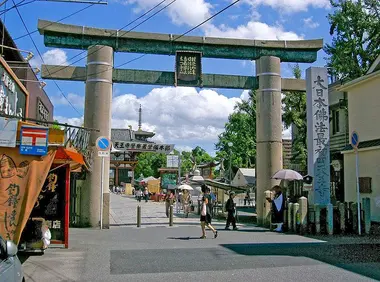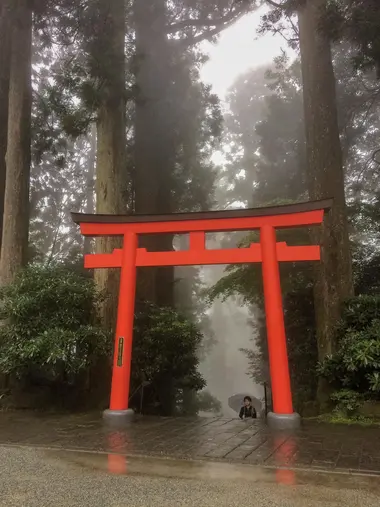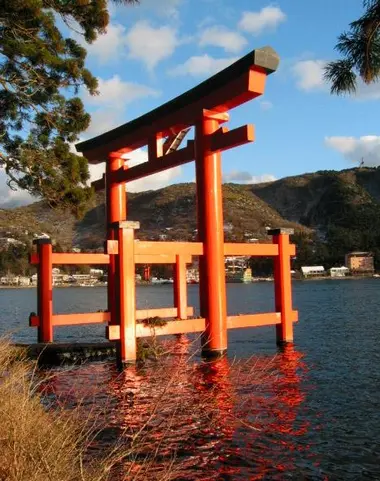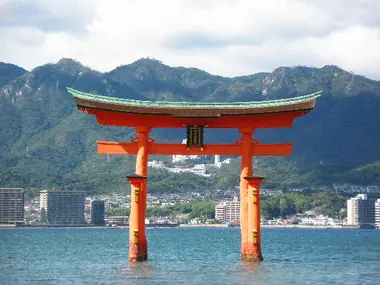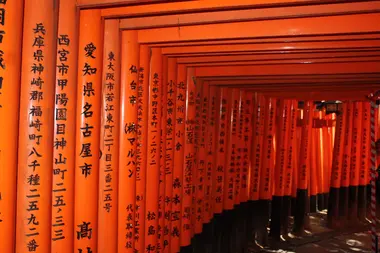Torii, das heilige Tor Japans
- Veröffentlicht am : 02/01/2024
- Von : S.R. / I.D.O.
- Youtube
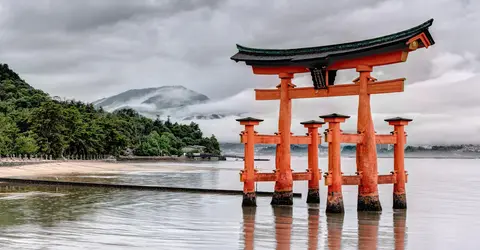
Torii in Japan
MustangJoe
Was ist ein Torii und was ist seine Bedeutung?
Ein Torii (鳥居) ist ein traditionelles japanisches Tor, das man normalerweise am Eingang von Shinto-Schreinen findet. Es markiert die Grenze zwischen dem profanen Raum und dem heiligen Bezirk des Schreins. Der Torii ist zu einem der emblematischsten Symbole des Shintoismus und Japans geworden.
Das Wort "torii" bedeutet wörtlich übersetzt "wo die Vögel sitzen". Der Mythologie zufolge sind Vögel Boten der Götter. Die Torii würden daher den göttlichen Gesandten als Sitzgelegenheit dienen, wenn sie auf die Erde herabsteigen.
Das Überschreiten eines Torii bedeutet, einen reinen und heiligen Raum zu betreten. Es ist ein starker symbolischer Akt des Respekts und der Reinigung, bevor man sich den Kami, den shintoistischen Gottheiten, nähert. Besucher verbeugen sich aus Respekt, wenn sie unter einem Torii hindurchgehen.
Die Ursprünge und die Geschichte der Torii
Der genaue Ursprung der Torii ist ziemlich unklar und es gibt mehrere Theorien. Einige glauben, dass sie von den indischen und nepalesischen heiligen Säulenhallen, die "Torana" genannt werden, inspiriert wurden.
Eine populäre Legende aus dem Kojiki, einer Sammlung japanischer Gründungsmythen aus dem 8. Jahrhundert, liefert jedoch eine andere Erklärung. Die Sonnengöttin Amaterasu soll sich aus Wut über ihren Bruder in einer Höhle eingeschlossen und die Welt in Dunkelheit gehüllt haben. Um sie nach draußen zu locken, hätten die anderen Gottheiten Hähne auf einer Stange vor dem Höhleneingang aufgestellt. Das Krähen der Vögel hätte Amaterasu schließlich nach draußen gelockt. Da "tori" im Japanischen Vögel bezeichnet, würde diese Geschichte den Namen und die ursprüngliche Funktion der Torii als Sitzstangen für die göttlichen Boten erklären.
Die ersten Torii sollen aus dem 10. Jahrhundert stammen. Ursprünglich waren die Schreine einfach durch zwischen Pfosten gespannte Seile abgegrenzt. Nach und nach wurde die Holzstruktur der Torii allgemein üblich, um die Schwelle zum Bereich der Kami deutlich zu markieren.
Die verschiedenen Arten von Torii und ihre Merkmale
Trotz einer gemeinsamen Grundform gibt es eine große Vielfalt an Torii-Stilen. Sie werden in zwei Hauptkategorien eingeteilt:
- Die geraden Torii, die sogenannten Shinmei Torii (神明鳥居), die aus 5 Hauptvarianten bestehen. Der berühmteste ist der Ise-Stil mit seinen klaren Linien, den man vor allem am großen Ise-jingū-Schrein findet.
- Torii mit geschwungenen Linien, genannt myōjin torii (明神鳥居), die 6 Varianten umfassen. Am bekanntesten ist der Inari-Stil mit seinen zwei nach oben gebogenen Querstreben, der häufig an Schreinen zu Ehren von Inari, dem Kami des Reis und des Wohlstands, zu finden ist.
Ein Standard-Torii besteht aus zwei vertikalen Säulen (hashira), die zwei horizontale Stürze tragen, oben den kasagi und unten den nuki. Verstärkungsleisten können die Elemente miteinander verbinden. Das Ganze ruht auf einem Steinsockel, der Kamebara genannt wird.
Holz ist das traditionellste Material, aber es gibt auch Torii aus Stein, Bronze und heutzutage sogar aus Beton oder Stahl. Die meisten Tori sind zinnoberrot bemalt, eine heilige Farbe, die böse Geister abwehren soll. Ihre Basis ist manchmal schwarz.
- Lesen Sie auch: Shinto-Schreine, die man gesehen haben muss
Die Rolle der Torii am Eingang eines Shinto-Schreins
Ein Torii steht normalerweise am Eingang eines Shinto-Schreins, um den heiligen Bezirk abzugrenzen. Er kann auch den Beginn eines Pilgerwegs oder den Zugang zu einem verehrten natürlichen Ort wie einem heiligen Berg markieren.
Manchmal markiert eine Reihe von torii den sandō, die Allee, die zum Hauptpavillon führt. Jeder durchschrittene torii zeigt eine Stufe der Heiligkeit an, die mit der Annäherung an die Gottheit zunimmt.
Das Passieren eines Torii ist ein symbolischer Akt, der die Einhaltung eines bestimmten Protokolls erfordert. Zunächst muss man seine Hände und seinen Mund im Waschpavillon reinigen. Dann verbeugt man sich vor dem Torii einmal als Zeichen des Grußes und des Respekts vor den Kami, bevor man ihn überschreitet.
Es ist auch üblich, nicht in der Mitte des Durchgangs unter dem Torii zu gehen, da dieser Bereich normalerweise den Gottheiten vorbehalten ist. Es ist daher besser, leicht seitlich zu gehen.
Wie verhält man sich gemäß den Traditionen vor einem Torii?
Im Shintoismus ist es üblich, den Schrein durch dasselbe Torii zu betreten und zu verlassen, um nach dem Kontakt mit dem Heiligen korrekt in die profane Welt zurückzukehren. Manche Besucher ziehen es daher vor, das Torii zu umgehen, wenn sie nicht sicher sind, dass sie denselben Weg wieder zurückgehen werden.
Das Überschreiten eines Torii verpflichtet zu einem reinen und respektvollen Verhalten innerhalb des Schreins. Sie sollten ruhig sprechen und den Ort sauber halten.
Aus Rücksicht auf die ehrwürdigen Säulen, die den Durchgang der Gottheiten empfangen, sollte man auch nicht die Hände auf die Säulen legen oder sich gegen die Torii le hnen.
Ebenso ist es aus Respekt vor dem heiligen Charakter des Ortes üblich, keine Fotos unter dem Torii oder von hinten zu machen, wenn man ihn passiert hat. Für Erinnerungsfotos stellt man sich am besten seitlich auf.
Einige symbolträchtige Torii, die es in Japan zu entdecken gilt
Unter den Tausenden von Torii in Japan gibt es einige, die aufgrund ihrer Schönheit, ihrer Größe, ihres Alters oder ihrer ursprünglichen Lage besonders berühmt sind:
- Der große schwimmende Torii des Itsukushima-Schreins auf derInsel Miyajima, der bei Flut aus den Fluten aufzutauchen scheint und zu den "drei schönsten Landschaften Japans" gehört.
- Die Tausenden von zinnoberroten Torii des Fushimi Inari Taisha in Kyoto, die lange, fotogene Tunnel entlang der Pfade des heiligen Berges Inari bilden.
- Das 1000 Jahre alte Torii aus Zypressenholz des Meiji-Schreins in Tokio.
- Das große, unter Wasser stehende Stein-Torii des Hakone-Schreins am Ashi-See mit dem majestätischen Berg Fuji im Hintergrund.
- Das riesige, 25 m hohe Torii des Heian-Schreins in Kyoto.
Der Torii, ein unverzichtbares Symbol der japanischen Kultur
Das Torii ist dasSymbol des Shintoismus und Japans und hat sich weit über den japanischen Archipel hinaus verbreitet. Heute findet man dieses Symbol fast überall auf der Welt auf Postern, Logos, Gegenständen usw., die sofort an das Land der aufgehenden Sonne erinnern.
Die schlichte Ästhetik dieses eleganten Bogens und seine spirituelle Aura verleihen ihm eine universelle Beschwörungskraft. Als Bild der Weisheit und des inneren Friedens lädt das Torii zur Besinnung, zum Loslassen und zum Respekt vor der Natur ein - wesentliche Werte des Shintoismus, die überall inspirieren.
Einige im Ausland errichtete Torii sind sogar zu echten lokalen Attraktionen geworden, wie das Torii im Japanese Tea Garden in San Francisco oder das Torii im Orientalischen Park Maulévrier in Frankreich.
Ob in Japan vor einem echten Schrein oder anderswo auf der Welt vor einer dekorativen Nachbildung, das Passieren eines Torii bleibt eine starke symbolische Erfahrung, die mit der Kultur und den jahrtausendealten Traditionen Nippons verbindet.
Einen Torii spenden: eine gängige Praxis, um den Segen der Götter zu erhalten
In Japan ist es üblich, dass Privatpersonen oder Unternehmen einen Torii an einen Schrein spenden, um im Gegenzug den Segen der Kami zu erhalten. Der Name des Spenders, das Datum und manchmal auch ein Wunsch werden dann darauf vermerkt.
Diese Kiganbun genannte Praxis ermöglicht es den Schreinen, ihre zahlreichen Torii durch die Spenden der Gläubigen regelmäßig zu erneuern. Für die Spender ist es auch ein Akt der Frömmigkeit und Großzügigkeit, der ihnen göttlichen Schutz bringen soll.
Die Kosten für ein kleines Votiv-Torii liegen bei etwa 400.000 Yen (~3000€). Größere Torii können jedoch mehrere zehn Millionen Yen kosten. Diese fromme Geste stellt also eine beträchtliche, aber lohnende Investition dar.
Die langen Torii-Alleen wie im Fushimi Inari Taisha sind das Ergebnis zahlreicher solcher Spenden. Als Gegenleistung für seine Spende kann der Spender seinen Namen diskret auf die Torii-Pfosten kalligraphieren lassen. Es ist eine Form der Reklame und des Stolzes, einen "eigenen" Torii an einem vielbesuchten heiligen Ort zu haben.
Wenn ein Torii durch Witterungseinflüsse beschädigt wird, wird er auch hier mithilfe von Spenden durch einen neuen ersetzt. Das alte heilige Torii wird dann rituell verbrannt oder respektvoll an einem anderen Ort gelagert.
Diese ständigen Spenden und Erneuerungen sorgen dafür, dass die Torii seit Jahrhunderten zur Freude der Kami und der Besucher dauerhaft in der Landschaft der japanischen Schreine präsent sind.
